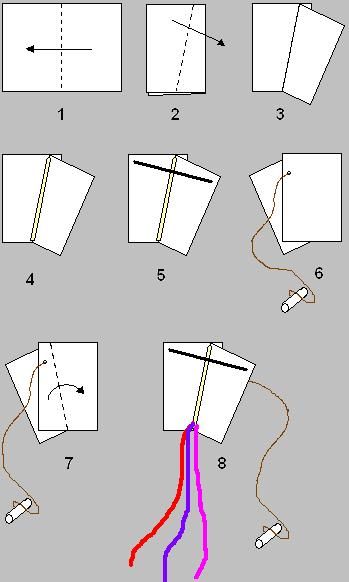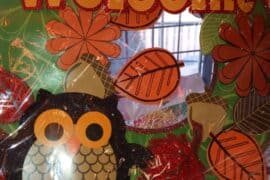Simple Steps to Crafting Your Very Own Kite
Hey there, awesome parents and creative kids! Are you looking for a super fun activity that combines crafts, outdoor fun, and a tiny bit of science all rolled into one? You guessed it – we’re talking about kite-making! It’s a fabulous way to spend quality time with your kiddos, and hey, who doesn’t love watching a brightly colored kite dancing in the sky? ?
Now, you might be thinking, “But wait, isn’t making a kite complicated?” Nope, not at all! I’m here to guide you through the process, and trust me, it’s as breezy as the wind your kite will soon be catching. So, let’s get crafting and set your spirits (and your kite) soaring!
Materials You’ll Need
- Sturdy paper or a lightweight fabric for the kite body (think ripstop nylon or a recycled plastic bag)
- Two wooden dowels or bamboo sticks for the kite frame
- String or fishing line for the bridle and the flying line
- A ruler and a pencil for marking and measurements
- Scissors for cutting (safety first, so perhaps kiddo-friendly ones!)
- Masking tape or glue to hold everything together
- Ribbon or strips of fabric for the tail
- Decorative materials (stickers, markers, paint) to make your kite uniquely yours
Creating the Kite Frame
Alrighty, let’s start by constructing the skeleton of your kite – the frame! It’s what gives our kite its shape and stability in the ferocious dance with the wind.
- Take your two sticks – one should be longer than the other. The longer one will be your spine (vertical support) and the shorter will be your crossbar (horizontal support).
- Place the shorter stick about a third of the way down the longer stick to form a lower-case ‘t’ shape. This will resemble the classic kite silhouette we all know and adore.
- Secure the two sticks together with string or twine. Wrap it around the intersection until it’s snug as a bug and then secure with a knot. For extra strength, dab a bit of glue on the knot – we’re creating a resistant, fly-high companion, after all!
Attaching the Kite Body
Now we wrap our kite frame with the kite body, giving it a surface to catch the wind. This part is crucial for aerodynamic magic!
- Lay your sail material (paper, fabric, or plastic bag) on a flat surface and place the frame on top.
- Trace around the frame, leaving a couple of inches for the border. This will allow you to fold it over the frame.
- Cut out the shape you’ve traced – be extra careful with those scissors!
- Fold the edges over the frame and secure them with tape or glue. Voila! It’s starting to look like a real kite now!
Don’t go anywhere; we’re not done yet! There’s more to this beguiling kite tale. We’ll be jumping next into how to craft a sturdy bridle, bind the perfect tail, and decorate your kite for that personalized touch that will undoubtedly make it the coolest one in the sky!
Remember, kite-making is just as much about the journey as it is about the destination. It’s a project filled with learning, laughter, and a touch of patience, leading to the ultimate reward – a flight on a breezy day!
So grab those materials and let’s get kiting! Keep reading to discover the next steps in becoming a kite-making maestro. Happy flying! ??

5 Essential Preparation Tips for Kite Making
Before we jump back into our high-flying kite construction, let’s chat about a few handy tips to ensure your kite-making adventure is as smooth as the summer breeze!
1. Safety First
When working with sharp tools like scissors or dealing with the potential splinters from wooden dowels, make sure safety is your number one priority. This means supervising young children at all times and maybe doing the trickier parts yourself. Always use child-friendly scissors and sand down any rough edges on the sticks.
2. Choose the Right Materials
The materials you select can make or break your kite’s performance. Opt for lightweight yet sturdy options, like ripstop nylon, that will stand the test of robust winds and the occasional crash-landing. If you’re going eco-friendly with a plastic bag, ensure it’s free of tears and holes.
3. Patience Is Key
Making a kite can test your patience, but remember, it’s an activity meant to bring you and your child closer together. Take breaks if needed and don’t rush the process. The bonding time and ensuing fun are well worth the investment.
4. Learn the Basics of Aerodynamics
Half the fun is understanding why your kite can fly! Teach your kids the basics of aerodynamics – how the wind creates lift and how the tail stabilizes the kite. It’s a mini physics lesson wrapped in layers of entertainment!
5. Check the Weather
Finally, pick the right day for kite flying. A moderately windy day (about 5-25 mph) is perfect for kite flying. Avoid stormy weather, and stay away from power lines and traffic. Open fields and beaches make ideal kite-flying locales.
Crafting Your Kite’s Bridle
- The bridle is a critical component that connects your kite to the flying line. Cut a piece of string about 1.5 times the length of your kite’s spine.
- Tie each end of the string to the top and bottom of the spine, ensuring it is balanced and centered.
- Add a small loop of string to the middle of the bridle – this is where you’ll attach the flying line.
Binding the Perfect Tail
- The tail adds stability and flair to your kite. Using ribbons or fabric strips, create a tail that is roughly three to six times the length of your kite.
- Attach it to the bottom end of your kite frame, ensuring it is secure. You can add more tails if needed to create additional stability, or just for the fun of decorating!
Decorating Your Kite
This is where you and your kiddos can let your imaginations take flight. Color your kite with bright markers, add stickers, or paint designs onto the material. Just remember to keep it balanced – too much decor on one side could impact the flight.
Final Touches and Takeoff
Once your kite is fully assembled and decked out, it’s time for the moment of truth – the first flight. Find an open area, free from obstacles, and let your kite catch the wind. Gently let out the string as your kite climbs higher and don’t forget to keep the line taut.
If your kite isn’t flying as expected, don’t fret! Adjust the bridle or add weight to the tail as necessary. Kite flying is as much about fine-tuning as it is about fun.
And there you have it – everything you need to know to make and enjoy kites with your family. Keep learning, experimenting, and enjoying your time outside. Happy flying, kite makers! ??
See more great Things to Do with Kids in New Zealand here. For more information see here
Disclaimer
The articles available via our website provide general information only and we strongly urge readers to exercise caution and conduct their own thorough research and fact-checking. The information presented should not be taken as absolute truth, and, to the maximum extent permitted by law, we will not be held liable for any inaccuracies or errors in the content. It is essential for individuals to independently verify and validate the information before making any decisions or taking any actions based on the articles.




